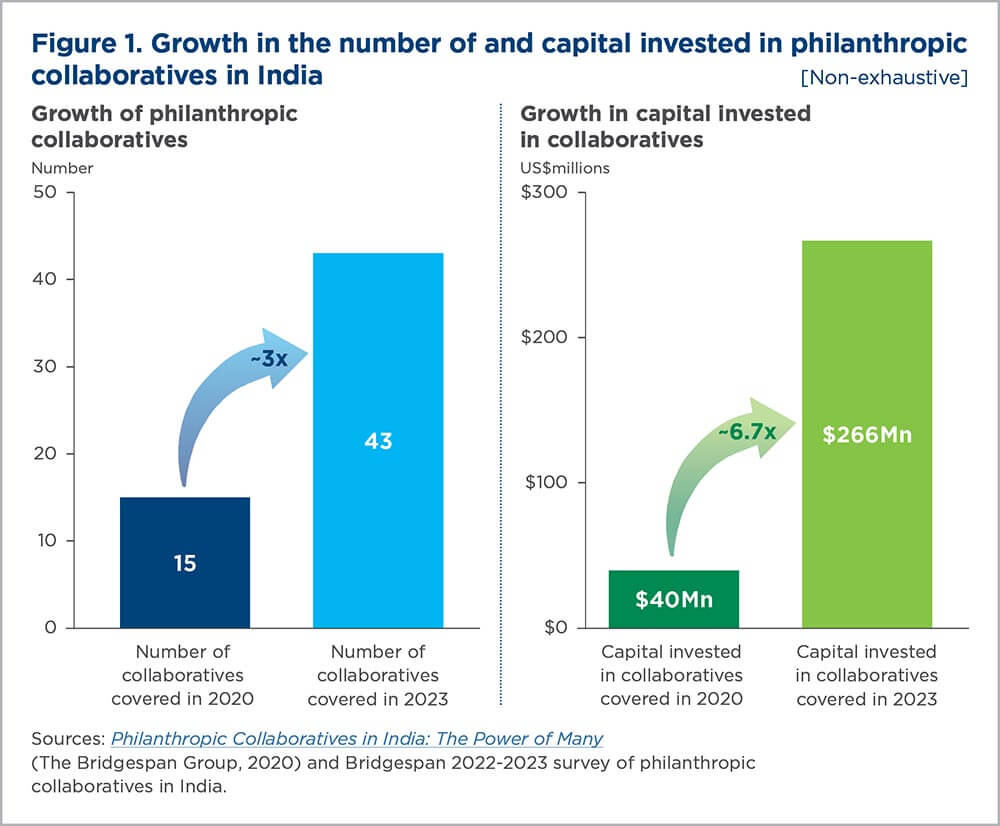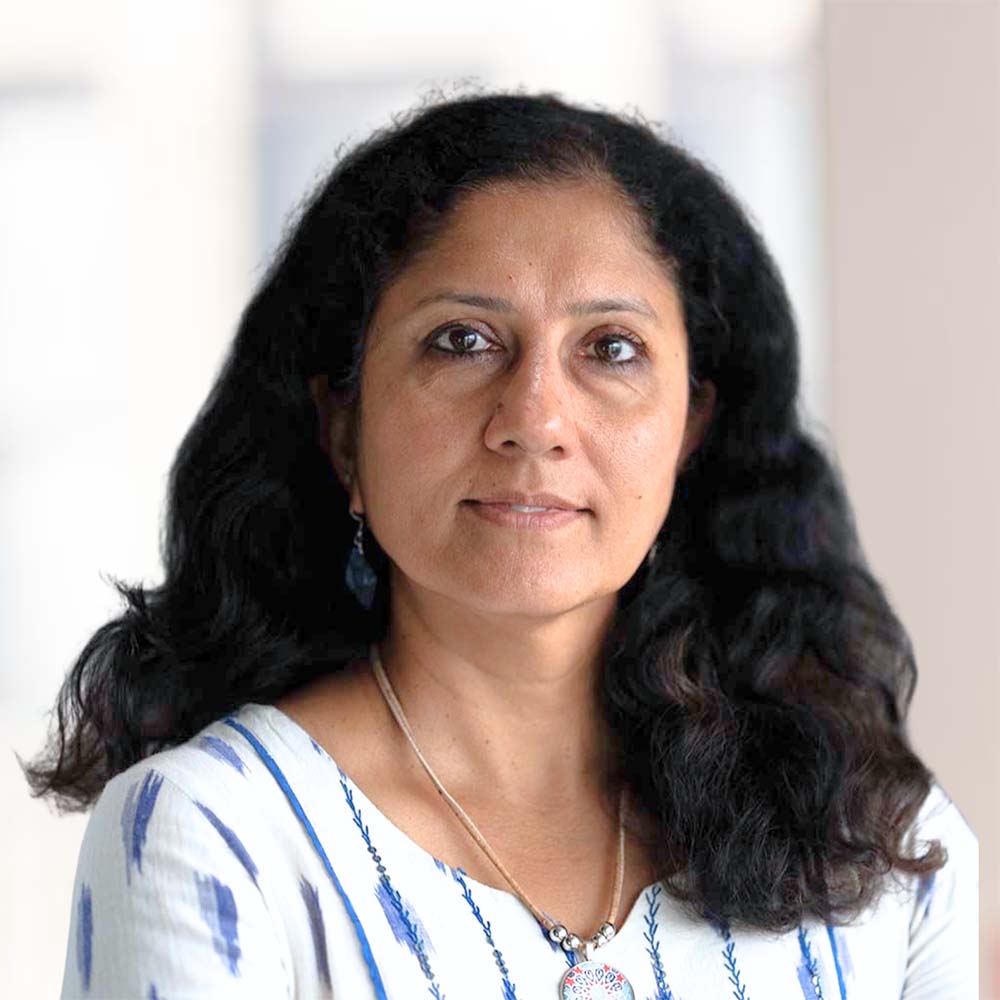Executive Summary
Philanthropic collaboratives are burgeoning across India: the number we’ve tracked has nearly trebled over the past four years. Whilst many new donor collaboratives formed to provide relief to those affected by COVID-19, collaboratives have also emerged to collectively address complex social challenges over the long term. Thus, newer collaboratives such as the REVIVE Alliance are evolving into post-pandemic roles, whilst other emerging and established collaboratives, such as the ClimateRISE Alliance and Bharat EdTech Initiative, grow their influence.
What accounts for the rising popularity? In 2022 and 2023, we conducted a survey and a series of interviews and field visits to get a deeper understanding of donor collaboratives, which we define as having been co-created by three or more independent actors, including at least one philanthropist or philanthropy.

Collaboratives don’t lack for ambition. Nearly half of the funder collaboratives in our survey embrace field strengthening as their primary goal. This is the oft-unseen work of galvanising myriad actors across a social change issue, or field, to achieve a shared goal for equitable systems change. In addition, collaboratives are about as likely to say their primary role is to mobilise funding as they are to prioritise implementing programmes.
Encouragingly, there are signs that collaboratives are proving valuable. We found overwhelmingly positive satisfaction levels when we calculated Net Promoter Scores from our survey respondents. Indeed, our survey respondents expect collaboratives to rise in significance in India’s social sector in the coming years.
Philanthropic collaboratives seem here to stay because they can be flexible, cross-sectoral, and efficient. Still, they are relatively young and growing into their potential. It takes time for the participants of a collaborative to learn how to work together, let alone raise funds and grow programmes together. Many of the collaboratives that came together during the COVID-19 crisis are still learning from the experience and evolving their strategies and operating models.
Collaboratives that strive to grow and become more effective are evolving their practices in four areas, some specific to collaboratives, some relevant to the evolving ecosystem around them:
Easier on-ramps for new funders. Five funders play a key role in 65 percent of a sample of 25 collaboratives covered in our research. The process of discovery seems to be holding other funders back because many are not aware of the breadth of collaborative options. On-ramps to help them find and get started with collaboratives would ease the way.
Guidance for backbone organisations. Lower satisfaction amongst operating partners and “backbone organisations” (organisations that play coordinating roles bringing stakeholders together) points to how intense and challenging the role can be. One way to address that is to support organisations that play the backbone role in collaboratives by investing in their skills and capabilities and helping them build their capacity.
Support for measurement, evaluation, and learning design. Measurement, evaluation, and learning practices are not always straightforward for collaboratives, given the scale and long-term nature of their goals and their diversity of stakeholders. About 70 percent of backbone organisations highlight that the time and effort required to conduct measurement and evaluation are major challenges. A toolkit that captures best practices, how-to guidance, coaching support, and maybe even technology tools would be helpful. (Bridgespan’s forthcoming article, “How Philanthropic Collaboratives Can Build Impact Measurement, Evaluation, and Learning Capabilities,” will provide a good starting point.)
Equity in collaboratives. Two-thirds of respondents to our survey believe that the collaborative they are part of focuses on a marginalised group in their communities. Collaboratives have an opportunity to further lean into equity imperatives by emphasising lived experience, which could manifest, for example, as community representation on leadership teams, staff, or boards. Another way might be to share practices on equitable programme design and execution with other collaboratives and to learn from peers.
The good news is that India has so much to draw on for philanthropic collaboration. There are untapped opportunities for domestic philanthropy – including corporate social responsibility initiatives and wealthy families – to step up participation. Can more extend themselves to see if they have a role to play in solving enduring social and environmental challenges? The growing momentum behind collaboratives offers one way to get started.








